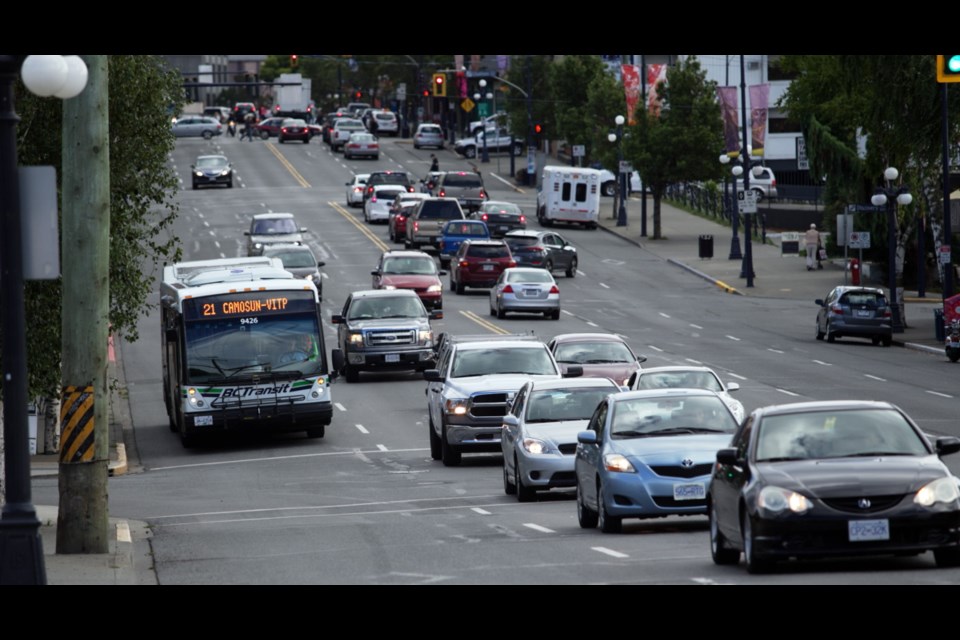Dedicated bus and bike lanes running along Douglas Street, through downtown Victoria, should be enforced and in effect 24 hours a day, seven days a week, Mayor Lisa Helps said.
“I think it absolutely needs to be and that will just clear up all of the challenges,” Helps said.
The mayor’s comments come as Victoria councillors consider a revised design that would widen Douglas Street by one metre for a southbound bus priority lane between Tolmie and Hillside avenues.
Existing priority lanes are in effect from 6 a.m. to 9 a.m. southbound and 3 p.m. to 6 p.m. northbound. During those times, only buses and cyclists are supposed to use them. Other vehicles may be in the lanes only to make right turns.
Victoria police have said that inadequate signage makes it difficult to enforce the rules.
Coun. Geoff Young, council liaison for the Burnside Gorge Community where the bus lanes are slated, echoed Helps’s comments. “The neighbourhood was very clear and I, myself, have also been very strongly of the view that it should be a 24-hour, seven-day-a-week bus lane,” Young said.
“I absolutely think there should be no ambiguity. It’s for buses and bicycles.”
Young said the bus lanes should be painted blue and permitted turning areas clearly delineated. “Beyond that it would be absolute: You’re in that lane. You get a ticket. Period.”
A report from city staff says “a full-time 24-hour designation of curb lanes for transit use is not needed outside of peak times from a traffic congestion standpoint.”
But a part-time bus lane doesn’t make sense, Young said, as it allows cars to use the bus lanes during less busy, non-rush-hour periods.
Many residents would have preferred that an existing travel lane be dedicated to transit, rather than widening the road — something staff said would create too much congestion, significantly increasing commuter times.
However, several revisions were made to the plan as a result of neighbourhood consultation, the report said.
For example, B.C. Transit had envisioned cutting 26 trees to allow for the road widening. The $1.6-million project now calls for removal of about 20 trees, with no trees at all to be removed between Tolmie and Frances. Thirty-five replacement trees will be planted.
Other improvements brought forward by the community include the introduction of speed-reader boards, way-finding signs and curb realignment to provide more space for cyclists, the report said.
If approved, the southbound lane will be the final phase for Douglas Street transit corridor improvements within Victoria’s boundaries. Work would begin in October with completion slated for the end of March.
B.C. Transit said its buses already carry 40 per cent of people travelling the Douglas Street corridor at peak times, yet account for just three per cent of vehicles.
In February, the provincial government committed $6.45 million to widen Douglas between Tolmie and Saanich Road, making room for a new northbound lane that will be exclusive to buses and bikes at all times, not just during rush hour. Construction had been expected to begin this fall, but will now begin and end in 2017.
The goal is a transit corridor stretching from Fisgard Street to the up-Island side of the planned $85-million McKenzie interchange.



